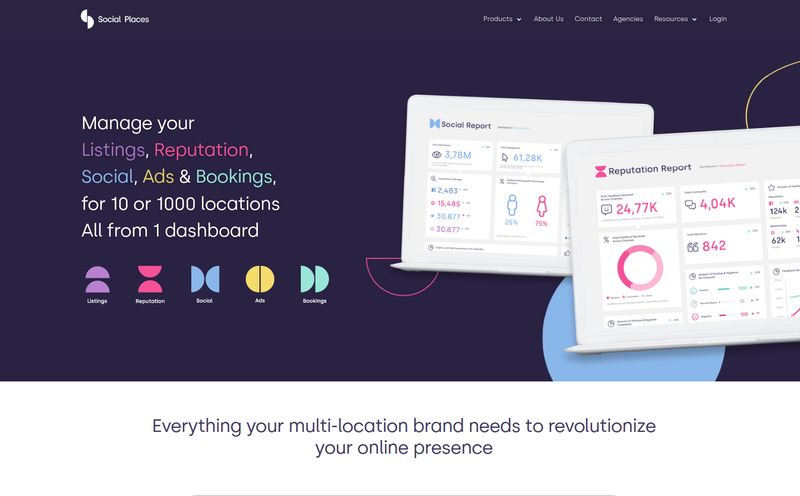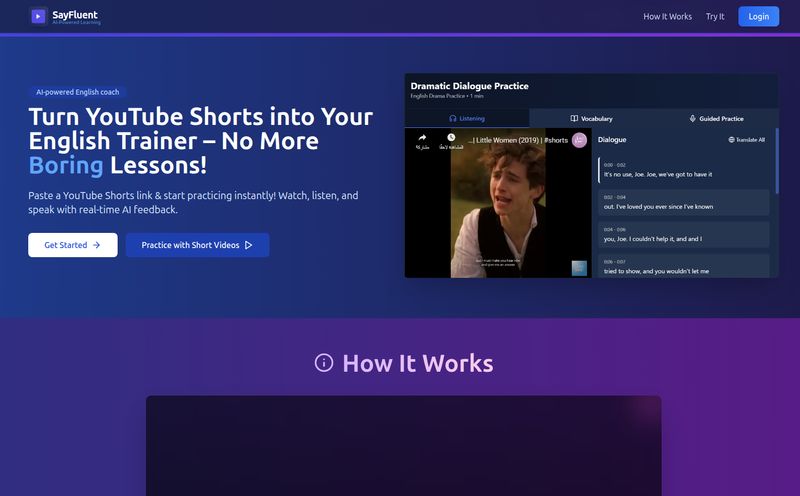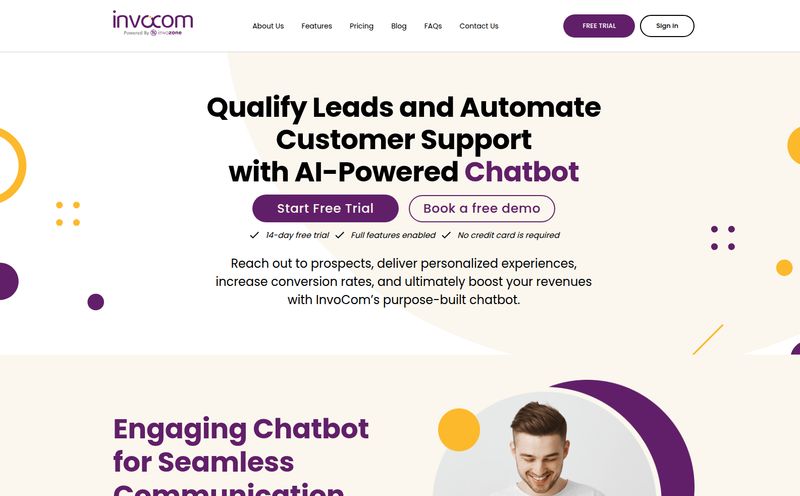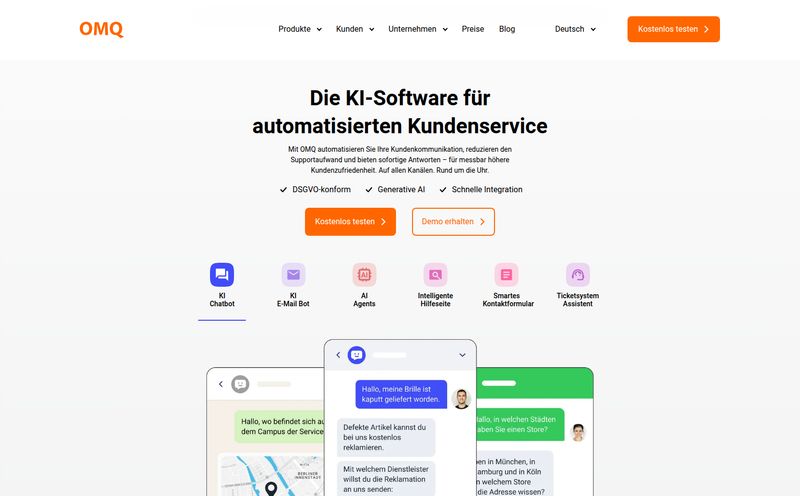There are few things that cause a universal groan quite like a dense, official-looking document landing in your lap. You know the one—tiny font, paragraphs that never end, and jargon that would make a lawyer's head spin. Now, imagine that document is in a language you don't fully understand. The stress level just went from 10 to 100.
For years, the solution has been a clunky mix of Google Translate, asking a friend who 'knows the language,' or just signing and hoping for the best. Not ideal. As someone who's spent years in the digital space, I'm always on the lookout for tech that solves a real, human problem. And I think I’ve stumbled upon something pretty special.
It's called WhatLetter, and it’s an AI document assistant designed to be a bridge over those troubled waters of confusing paperwork. And honestly, it’s a tool with a lot of heart.
So, What Is WhatLetter Anyway?
At its core, WhatLetter is an AI-powered tool that translates and, more importantly, simplifies documents. You take a picture of some paperwork, and it doesn't just give you a word-for-word translation. It lets you chat with an AI to actually understand what it all means. Think of it less like a dictionary and more like having a patient, multilingual expert in your pocket who can explain things in plain language.
The story behind it is what really got me. The founder, Sepehr Fard, talks about growing up as an immigrant child and being the designated translator for his parents. I know so many people who have lived that experience—the weight of translating medical forms or legal letters for your family is immense. He built WhatLetter to give that independence back, not just to immigrants but to seniors and anyone else overwhelmed by bureaucratic language. That's a mission I can get behind.
How It Actually Works (And It's Almost Too Easy)
I’ve seen a lot of tools overcomplicate their user experience, but WhatLetter keeps it refreshingly simple. There's no steep learning curve here. The entire process is basically three steps:
- Snap or Upload: You take a clear photo of your document or upload a PDF. This could be anything—a utility bill, a prescription from a doctor, a rental agreement, you name it.
- Translate: The tool quickly translates the text into your chosen language (they support over 30).
- Chat and Understand: This is where the magic happens. A chat window opens up, and you can ask questions about the document. Things like, "What is the due date on this bill?" or "Explain this section about 'indemnification' like I'm five." The AI will pull the information from the document and break it down for you.
It's incredibly intuitive. The focus is clearly on getting you from confusion to clarity as fast as possible.
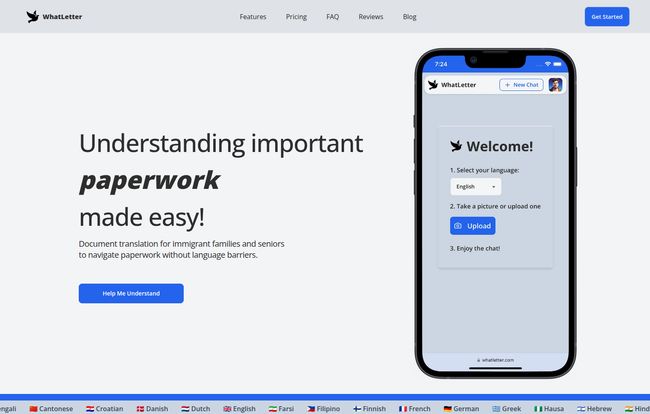
Visit WhatLetter
Who Is This Tool Really For?
While the website highlights immigrant families and seniors, I quickly realised the applications are much broader. This isn't just a niche tool; it's for anyone who's ever been stumped by a piece of paper.
For Families Bridging Language Gaps
This is the core audience and where WhatLetter shines brightest. It empowers elderly parents or relatives who don’t speak the local language to handle their own affairs, from reading mail to understanding their own health records. It restores a sense of dignity and independence, which is frankly priceless. It's the digital fulfillment of the founder's original mission.
For the Global Nomad and Traveler
Ever gotten a parking ticket in a country where you can't even read the alphabet? Or tried to figure out a train schedule that looks like abstract art? Yeah, me too. For travelers, WhatLetter is a lifesaver. Being able to quickly snap a photo of a sign, menu, or official notice and not only translate it but ask clarifying questions is a game-changer for navigating foreign countries with confidence.
For Small Businesses and Students
Think about it. Small businesses dealing with international clients can use this to quickly understand contracts or correspondence. Students faced with dense academic papers or research in another language can use the chat function to break down complex arguments and terminology. It's a powerful tool for comprehension, not just translation.
The Best Features That Caught My Attention
A few things really stand out to me as a professional who looks at tech all day.
- The AI Chatbot: This is the killer feature. A simple translation can still be confusing if it's full of translated jargon. The ability to ask follow-up questions like, "What do they mean by this?" is what sets WhatLetter apart from standard translation apps. It provides context, not just words.
- Privacy First: The company states clearly: "We do not save any images you provide on our servers." In an age where we're all a bit (or a lot) paranoid about our data, this is a huge green flag. Your sensitive medical and financial documents remain your own. Your chat history is saved for your reference, but the source image is not. A very smart approach.
- Growing Potential: They're already teasing upcoming features like voice typing and integration with WhatsApp and Telegram. This shows they're thinking about how people actually communicate and want to meet them where they are.
Let's Talk Money: WhatLetter Pricing
Okay, the practical stuff. The pricing structure is incredibly straightforward, which I appreciate. No confusing tiers or hidden fees.
| Plan | Price | What You Get |
|---|---|---|
| Free | $0 | Up to 3 document translations and 3 chat sessions per month. Perfect for occasional use. |
| WhatLetter Plus | $1.99 / month | Unlimited translations, unlimited chat, and access to all upcoming features. |
Honestly, the free plan is generous enough to see if it works for you. But for less than the price of a coffee, the Plus plan's unlimited access is a no-brainer for anyone who deals with this stuff regularly. It’s one of the most reasonably priced subscription services I’ve seen for the value it provides.
The Not-So-Perfect Bits (My Honest Take)
No tool is perfect, right? Right. WhatLetter is still young and there are a couple of things to be aware of.
First, it's currently web-based only. That means you have to use it through the browser on your phone or computer. It works great, but a dedicated mobile app would make the 'snap and go' process even smoother. I imagine this is high on their to-do list.
Second, the free plan is, well, limited. Three documents a month might not be enough if you're in the middle of a visa application or dealing with a complex medical issue. It’s more of a trial than a long-term solution, which is likely the point. It gives you a taste and leaves you wanting the full meal of the Plus plan.
Frequently Asked Questions
- How does WhatLetter clarify jargon in a document?
- After translating your document, you can use the AI chatbot to ask specific questions. For example, you can type "What does 'premium' mean in this insurance policy?" and the AI will analyze the context within the document and give you a simple explanation.
- What languages does the app support?
- WhatLetter supports over 30 languages, including English, Spanish, French, German, Chinese (Cantonese), Hindi, Arabic, and many more. They are continuously expanding their language library.
- How secure are my uploaded documents?
- This is a big one. WhatLetter prioritizes privacy. They explicitly state they do not save the images of your documents on their servers. The document is processed, and then it's gone from their end, which is excellent for sensitive information.
- Is there a mobile app version?
- Currently, WhatLetter is web-based, meaning you access it through a web browser on any device, including your phone. A dedicated mobile app has not been released yet, but the website is mobile-friendly.
- Can I use it for something other than official letters?
- Absolutely! You can use it for anything with text: recipes, product manuals, travel guides, academic articles, you name it. If you can take a picture of it, you can probably get help understanding it.
Final Thoughts: Is WhatLetter Worth Your Time?
Yes. A thousand times, yes. WhatLetter is a fantastic example of technology built with empathy. It's not just another AI gimmick; it’s a practical solution to a stressful, widespread problem. It tears down language barriers and demystifies the confusing language that institutions love to use.
Whether you're helping your parents, traveling the world, or just trying to figure out your own darn paperwork, this tool has the potential to make your life significantly easier. For the price, especially, the value is phenomenal. It’s a tool that gives back time, clarity, and most importantly, confidence. And you can’t really put a price on that.
